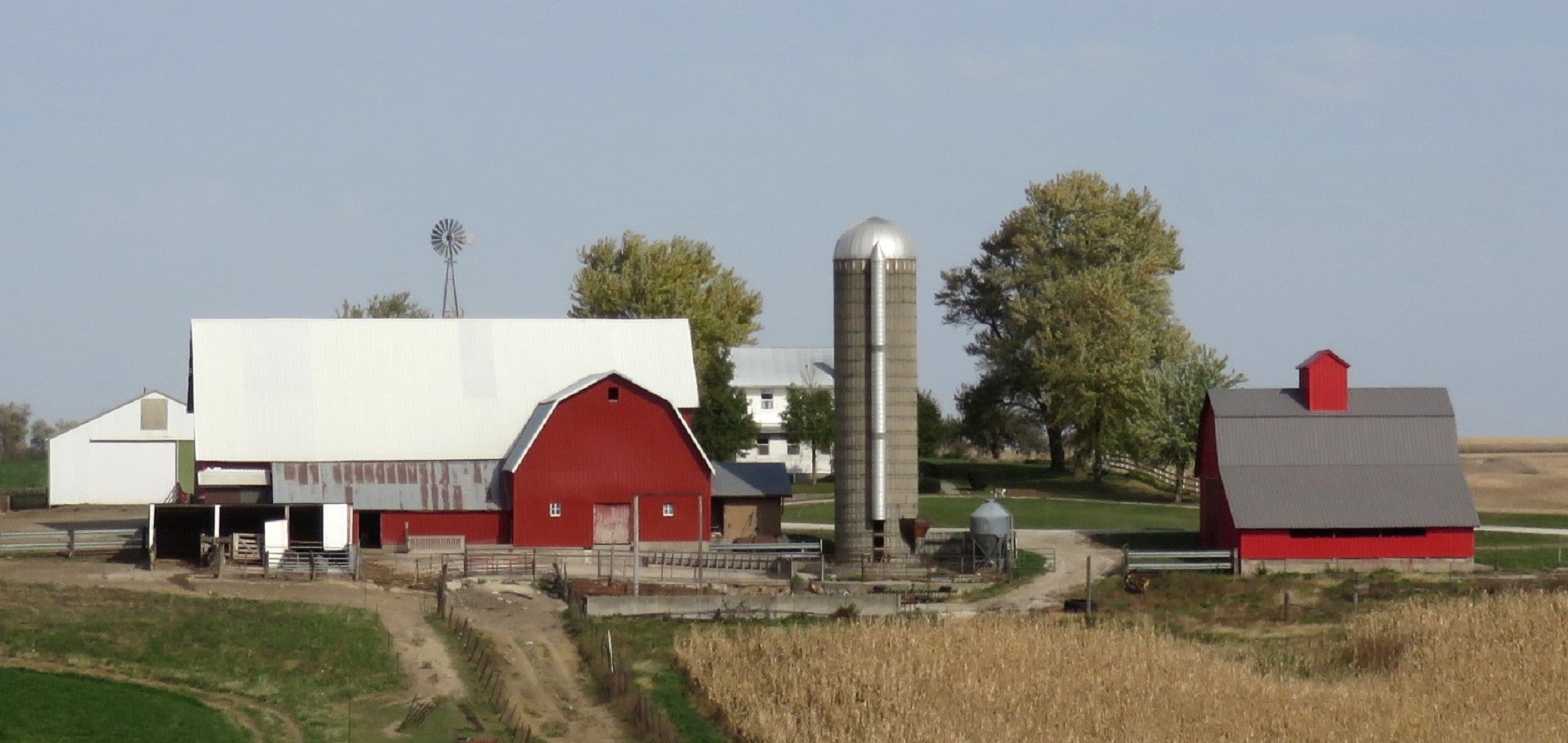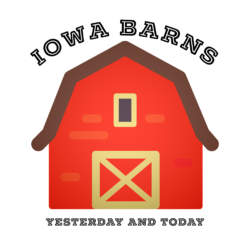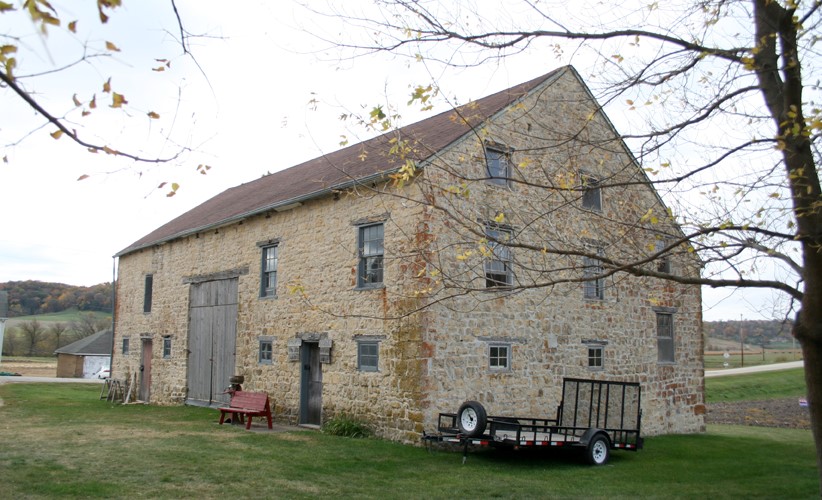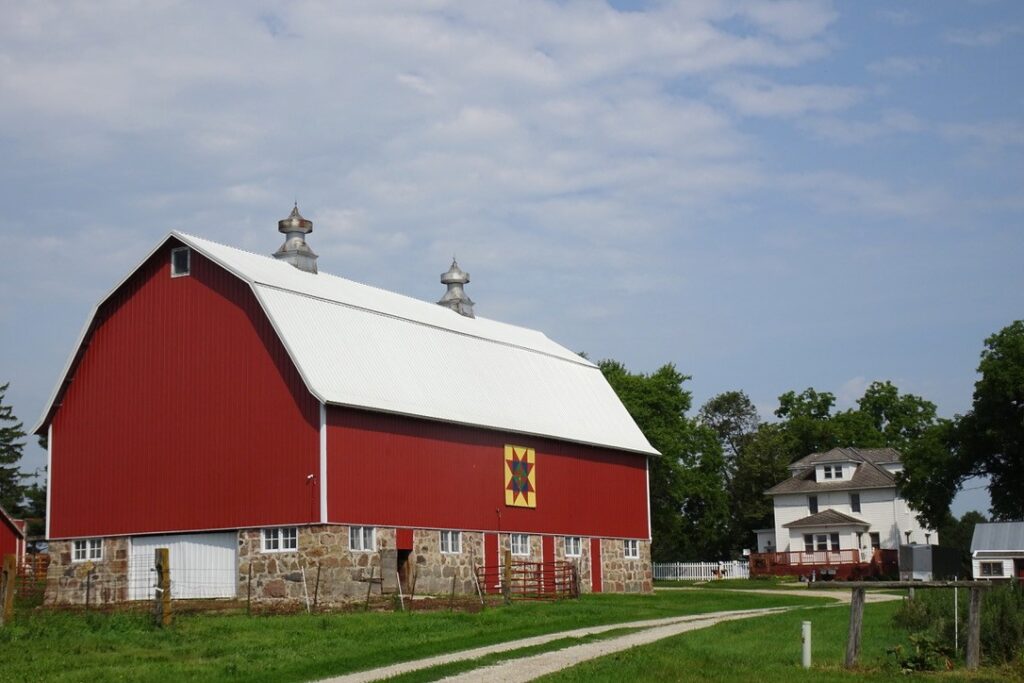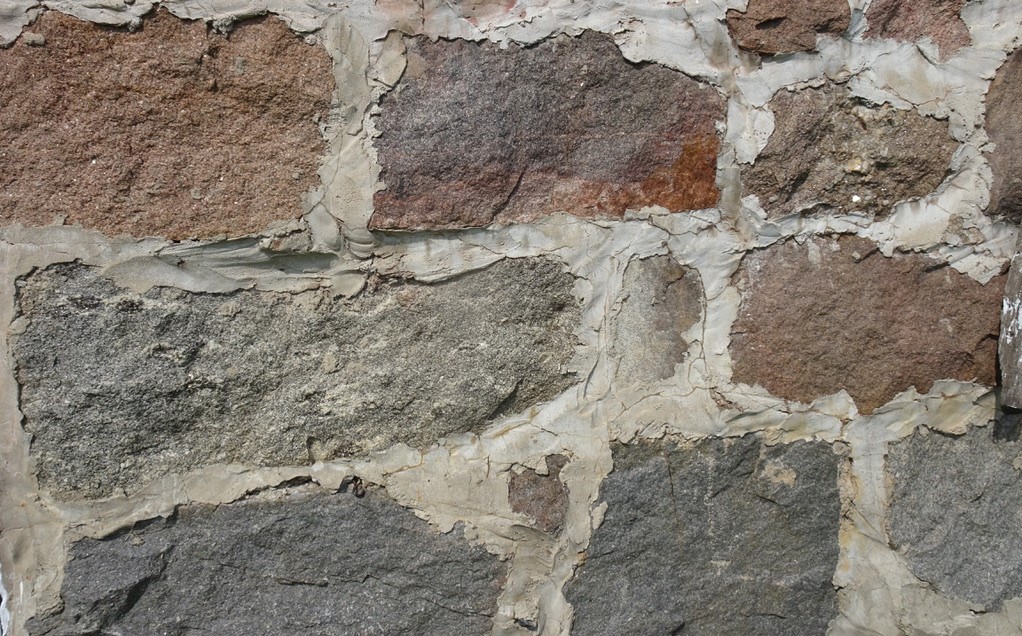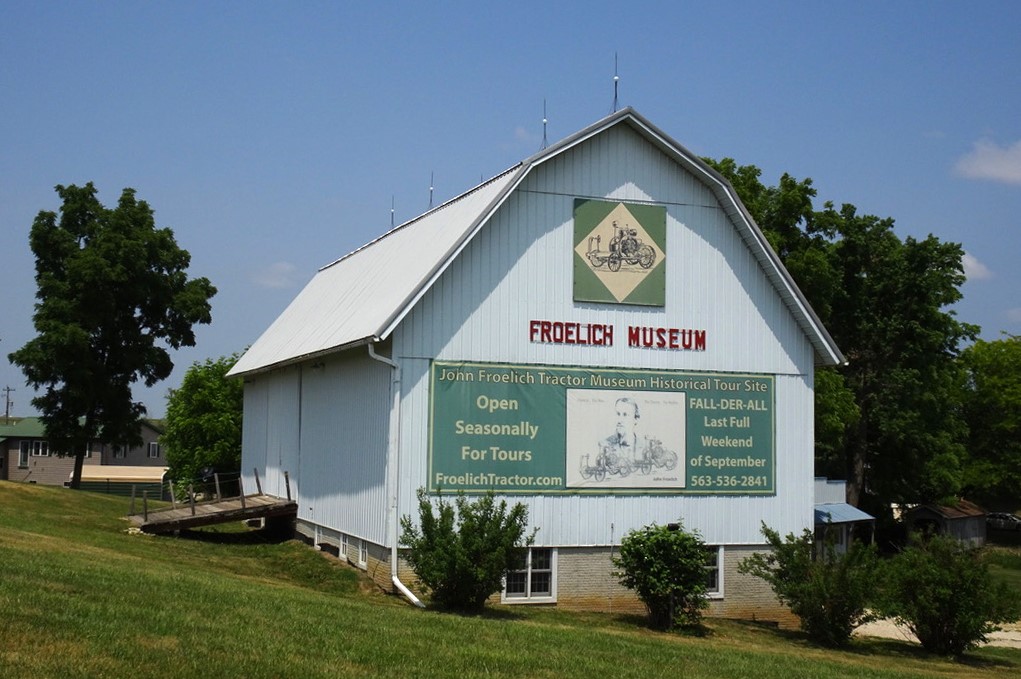
Froelich, an unincorporated village in Clayton County, was named after German immigrant Henry Froelich, who arrived in 1847. Within a short time there was a blacksmith shop, sawmill, stockyards, and even a depot.
This is also where John Froelich (1849-1933), Henry’s son, invented a one-cylinder engine that signaled the beginning of the history of tractors. This amazing invention will be featured in the next blog. He received 14 known patents in his lifetime, which include the one-cylinder gasoline propelled engine, a water-cooling radiator for internal combustion engines, a mechanical corn picker, a dishwashing machine, and more. He was inducted into the Inventors Hall of Fame in 1991.
The site of the Froelich Museum barn, visible from Highway 18, can’t be missed. The barn, built long after Henry died, has exhibits in the loft, and is available for rent for celebratory occasions.
Behind the restored general store (see photo below) is the museum where a model of the engine John Froelich invented is on display, as well as an 1866 country school, passenger depot, freight depot, and warehouse.

The Froelich Fall Festival (Fall-der-All) wlll be held Sept. 23-24, 2023.
Check the website www.Froelichtractor.com for more information. (2023 photos)
